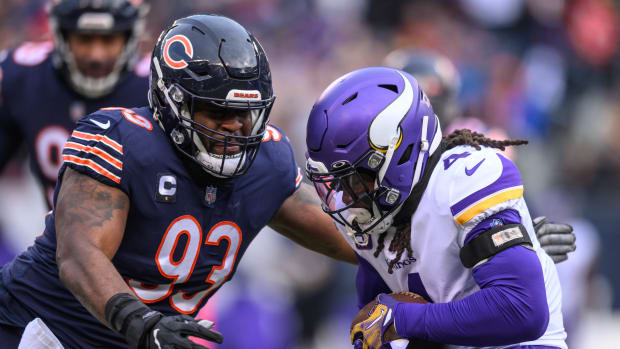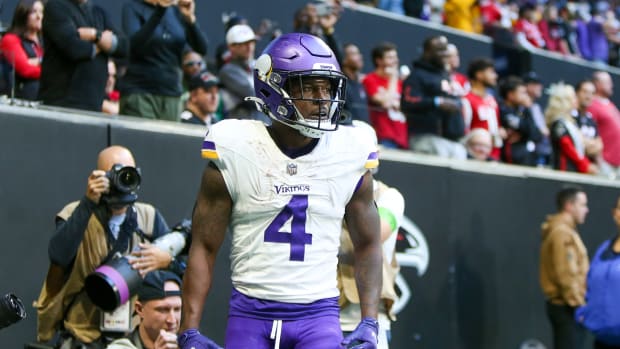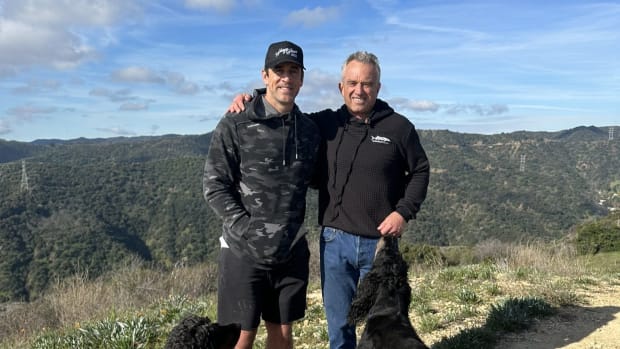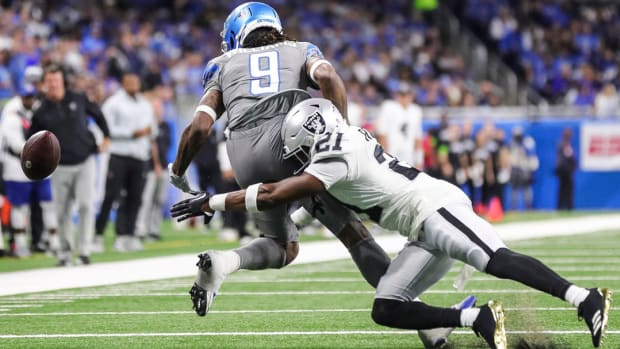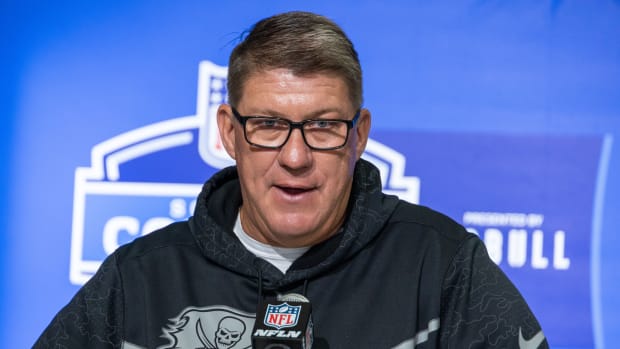Scouting the Giants: The Pressure Is on Eli Manning
1. Eli Manning is underappreciated. Maybe it’s because a lot of fans can’t help but see him as “Not Peyton.” Plus, when Manning makes mistakes, they often fall under the Enormous Head Scratcher column. But those mistakes are fewer and further between than they seem, and the things Manning does well are essential to high-level quarterbacking. He’s outstanding in the pocket, willing to keep his eyes downfield when bodies bear down, and mastered the nuanced movement required for keeping those bodies at bay. His arm is better than realized; there isn’t a throw the 35-year-old can’t make. And perhaps most importantly, Manning has total command of the offense. He checks in and out of running plays. He calls audibles. And Giants linemen don’t have to learn everything about defensive looks because Manning tells them at the line of scrimmage whom to block. (Maybe that’s why New York’s pass protection survived last year despite unripe rookies and a slew of backups filling in.) Manning could still be improving, too. He’s entering his third season in Ben McAdoo’s scheme, which is designed perfectly for him.
• CAMP REPORT: Welcome to the McAdoo Era
2. The key aspect of McAdoo’s scheme is the slant route and all the related patterns that stem from it. To propagate this, the Giants use a lot of widened three-receiver sets and two- and four-step timing dropbacks.
3. New York’s running game is not up to NFL standards. None of the Giants backs can make defenders miss, save for maybe Orleans Darkwa, who doesn’t appear to be in line for many opportunities. (Can’t tell you why.) The most dynamic weapon, Shane Vereen, is more of a receiver. And, less noticed but certainly worth noting, this scheme’s run designs don’t call for safeties to be blocked. Wide receivers are instead told to block the cornerback in front of them. That’s unusual—corners are less threatening run defenders than safeties—but it is simpler. However, if none of your runners are elusive, unblocked safeties become a problem.
• TALKING FOOTBALL: Last Manning Standing
4. The more ways the Giants can use Odell Beckham Jr., the better. Not so much because you want to get Beckham the ball in as many ways as possible (though you do), but because you know the opponent is going to over-prepare for every possible variation they might see. You can really disrupt a defense’s game-planning by giving them more Beckham variables to think about.
5. Ereck Flowers is the least developed left tackle in the NFL. His technique is straight from a How Not To manual. His hands are all over the place. His feet are uneven. He bends at the waist instead of the knees. And, remarkably, he often shows all of these flaws at once. The 2015 first-round pick has a lot of work to do.
• THE ODELL: ‘He’s a Football God ... and a Style God’
6. Center Weston Richburg is on the opposite end of that offensive line discussion. His mechanics are very sound, evidenced most clearly in situations where he has to adjust downhill to targets on the move.
7. The Giants overspent for free agent defensive end Olivier Vernon—and I don’t blame them. A sterile four-man pass rush sabotaged any chances their defense had last season. Vernon can fix that. He’s an efficient player who operates low to the ground. That’s why, in addition to be a double-digit sack artist, he’s a viable playside run defender even though he only weighs in the 260s-270s. His leverage is outstanding.
• GIANT SURPRISE: How Vernon’s $85 Million Deal Went Down
8. If you invest at defensive end—and the Giants did that across from Vernon, too, by re-signing Jason Pierre-Paul to a one-year deal—then it makes sense to sign a cornerback like Janoris Jenkins. Yes, the Giants probably paid too much for him (that’s free agency for ya). But at least Jenkins’s style fits. Just like Dominique Rodgers-Cromartie, Jenkins is at his best as a route jumper from off-coverage. That’s ideal for a defense that believes it can force the quarterback to throw before he wants to.
9. The Giants could have trouble covering tight ends this year. That job seems destined for strong safety Landon Collins, who performed it as a rookie. Collins has the physical strength, but poor movement skills (particularly while changing direction) can keep him from being in position to use it. Defensive coordinator Steve Spagnuolo has often tried to offset this by employing dedicated double-teams against upper-tier tight ends. Fortunately for the Giants, aside from those in their division (Jordan Reed, Jason Witten, maybe Zach Ertz), they don’t face many upper-tier tight ends this year other than Tyler Eifert. But a lot of average tight ends could be made to look upper-tier against them.
• LEONDARD MARSHALL: A Giant in the World of Medicinal Marijuana
10. This run defense can overachieve. Last season, it ranked 24th. Strongside linebacker Devon Kennard missed seven games. Having him back is crucial; the coaches love how he uses his hands when taking on blocks. Kennard gives New York more options for how to play run-gap responsibilities. Along the D-line, in addition to Vernon and JPP (a dynamic run defender), starting defensive tackles Johnathan Hankins (a fourth-year pro) and Damon Harrison (a free-agent acquisition) are superb lateral movers.
• Question? Comment? Let us know at talkback@themmqb.com
































